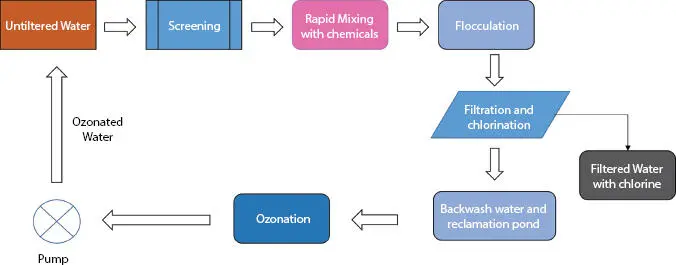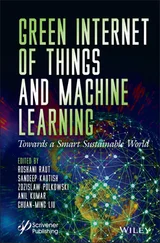1.4.1 Physical Infrastructure-Based
Digital innovations, in terms of physical technology, a smart city, transform into improved public facilities for people and better resource use while reducing environmental impacts. A city that integrates physical infrastructure, IT infrastructure, social infrastructure, and business infrastructure with a view to exploiting the city’s collective intellect. Technologies for embedded sensing allow data collection and analysis in real time [7]. This data is then presented to infrastructure companies as meaningful and accurate information, allowing them to make more sophisticated decisions [8]. AI learning is introduced in the infrastructure-based architectural-based systems which have more result in the accuracy and the beneficial purposes. For a deeper understanding of the usage of resources, AI may use accurate, robust, and practical knowledge obtained and processed by smart infrastructure. A change in urban planning and development leads to a more efficient and secure infrastructure that is better tailored to the needs of people. The data collection are carried through the process by the collecting the individual responses.
1.4.2 Social Infrastructure-Based
The standardization position involves many facets of the smart city’s architecture, organization, and functioning. Indian national smart city has principles that govern the unified criteria for radically new possibilities of centralized urban process management. The article describes the social infrastructure roles and tasks of single-industry cities, which should be taken into account in the introduction of the smart city framework. The Figure 1.4shows the physical infrastructure workflow. The selected fields of operation set out in the smart city concept are closely linked to the growth of single-industry social infrastructure [8–10]. The dynamic system of social engineering that lead to enhancement of quality of life through the use of innovative decision-making technology through the economic and the eco-friendly of the life systems.

Figure 1.4 Physical infrastructure workflow.
This entire infrastructure aims system of objects essential for the promotion of human activity, communications, as well as businesses, organizations, and organizations, delivering social and household services to the community, management bodies, and workers whose operations are structured to meet the social needs of people in conjunction with the quality of life indicators created [11]. Certain areas should be covered in the social engineering process like the electricity supply with the higher energy and sustainable solid waste management robust connectivity and digitalization.
Mobility system encompasses a variety of operating technology used for the purpose of transportation system and also in management system, including the payment facilities, monitoring remote display devices which are used to track and maintain the traffic conditions along transport routes [12].
1.4.4 Solid Waste Management System
This scheme allows for the systematic storage of sewage in well-designed sewers that are delivered to the Sewage Treatment Plant (STP) to be handled there in such a manner that the effluent follows the parameters specified by India’s Central Pollution Control Board. For horticulture, road-side drainage, road sweeping, and irrigation, the treated water can be recycled.
1.4.5 Economical-Based Infrastructure
Innovation-driven and university-supported economy focuses on cutting-edge innovation, not just for technology, industry, and business but also for architecture, planning, growth, and the cultural heritage. Cities are a prosperous location, but their prosperity depends on their population size and other factors. In the last two decades, urban India has developed at an exponential pace [14]. An optimistic estimation of India’s population growth indicates that the total population is projected to hit around 1.5 billion by 2031, with an increased urban population of about 600 million, or about 40%, by 2031.
India has the large economic growth development in the world. Unfortunately, economic data is not calculated for urban agglomerations, but rather for the district administrative unit, which has no association with the border of urban agglomerations. In India, the extent of urbanization of the different states and union territories varies widely. The increased population base of cities resulted in higher demand for manufacturing goods and commodities. This was the case of cities and towns which grew in Europe in the 19th century in the industrial belts and regions. More often, a polycentric, nature-based and people-friendly urban structure was invented when center city regions became congested with growing population and increasing industrial emissions [14, 15].
1.4.6 Infrastructure-Based Development
Spending on infrastructure is crucial not only for the development of India and for sustaining the region’s fight against poverty but also for laying the foundation for stronger future economic growth. The 11th Plan emphasized the importance of investment in infrastructure to achieve a sustainable and inclusive increase in GDP of 9% to 10% over the next decade. The growth of infrastructure is a core focus of the 11th Five Year Plan of the Government of India (2007–2012). In 2010, the nation initiated 94 new projects and saw an investment of US$71.9 billion in 2010, a rise of 85% from 2009. The investment is the highest amount witnessed by any developed nation in the entire 1990–2010 period in any given year [16]. In 2010, India alone accounted for 43% of the overall expenditure in private ventures in developing countries.

Figure 1.5 Water supply chain in city structure.
1.4.7 Water Supply System
The consistency of the groups of organic surface and groundwater, known as raw water, will also not fulfil the quality requirements of domestic and industrial consumers. In such cases, water treatment is required prior to its use. Water, typically via a network of storage tanks and drains, can be collected and circulated throughout the metropolitan environment until handled. Figure 1.5shows the water supply chain in city structure.
The concentrations of municipal sewers and their amounts of pollutants differ over a typical day of a typical week and over the course of a year. The conditions of flow may differ from free surface to supercharged flow, from constant to turbulent flow [18], and from static to non-uniform flow that varies rapidly or gradually.
1.5 Ideal Planning for the Sewage Networking Systems
1.5.1 Availability and Ideal Consumption of Resources
An equal and responsible distribution of services, including water and power, will be a smart city is most prominent feature one, which often requires access to proper sanitation and the disposal of solid waste. In order to ensure availability for future generations, smart cities must ensure proximity to services while placing a focus on the conscientious consumption of natural resources.
1.5.2 Anticipating Future Demand
India has becoming the most populated country around the world in the near decade. So, urbanization is expected to grow to 50% by 2030. Therefore, urban planning agencies need to consider potential demands to control and track the use of energy in today’s society. In industry and workplaces, we witness routine sanitization campaigns, daily sweeping in households, and intensified handwashing. It is estimated that a family of five needs 100 to 200 liters of water per day just to wash their hands. This would result in the development of about 200 liters of wastewater each day that would raise water demand and waste water generation from human habitation by 20% to 25%.
Читать дальше














